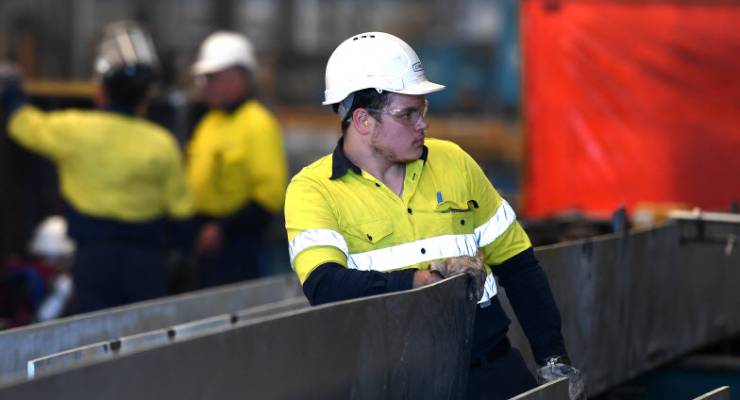
Buried in yesterday’s March quarter national accounts figures was a story that the government, business and the media neglected in their commentary on the GDP figures — one that raises serious questions about the sluggishness of Australian business.
While some analysis correctly pointed out that the share of income going to labour fell to an all-time low of 51.5% — the lowest since 2009 and, before the financial crisis, 1964 — the most fascinating story was real unit labour costs, or RULCs (which are the cost of labour per unit of output). The RULC index fell to its lowest level since the figure was introduced in the December 1985 quarter — down 2.5% in the March quarter from December and 6.1% from the March quarter of 2016. In the non-farm sector, they fell 2.4% and down 6.2% compared to the March 2016 quarter.
Given surging company profits and historic falls in RULCs, not to mention a prolonged period of stagnant wages, the question remains why Australian business isn’t spending. Business and its media mates can’t blame their employees and unions — especially when the Fair Work Commission is going after our lowest paid workers via its penalty rates decision, which will drag wages growth down yet further.
Not that private investment is dead: contrary to the impression left by last week’s capital expenditure data, the broader national accounts showed new private business investment growing 0.7% in the quarter, with new engineering construction expanding for the first quarter since September 2013, growing 4.3%. But it’s still sluggish.
Treasurer Scott Morrison didn’t mention the fall in real unit labour costs. But he did try to explain away what, for the government, is an inconvenient narrative of surging company profits (with the profit share of the economy reaching a record high 48.5%). Those profits:
“… reflected another increase in our terms of trade. It’s important to make that point. What we’ve seen in company profits has been largely restricted to the mining sector, and it has been heavily driven by what has happened on the terms of trade. People shouldn’t make the mistake of assuming a broader-base position on profits, based on those numbers. It is highly concentrated on that sector.”
Nothing to do with stagnant wages — or the possibility that business might simply return to shareholders higher profits (which is exactly what will happen with company tax cuts).
GDP growth itself now looks likely to undershoot the budget forecast of 1.75% for this year — GDP growth for the current quarter (which we won’t see until September) will have to grow by 0.75% to get to the forecast level, assuming no revisions to previous quarters. That’s quite a pick up in growth — and as Morrison said yesterday, this quarter is expected to be weak because of the impact of Cyclone Debbie on coal exports, which will produce another weak contribution from net exports.
On the other hand, nominal GDP rose 2.3% in the quarter from December to be 7.7% higher in the year to March. That’s the highest annual rate for years and is more than the 6% forecast from 2016-17 in the recent budget — which should, when combined with strong company profits, offset the impact on tax revenue of stagnant wages. As the ABS noted yesterday, compensation of employees (COE) rose 1% in the quarter, compared to a fall i9n the December quarter. That’s good news, but it still means COE is only 1.5% higher over the year to March.
Australian workers are doing their bit — they’re the ones tightening belts, stretching the household dollar, digging into savings — the household saving ratio fell to 4.7, half the rate of four years ago. Meantime Australian business, always so quick to lament their overpaid, unproductive workforce, are mostly sitting on their hands, whining about the lack of “reform” and demanding more tax cuts for themselves.
No wonder there’s growing alienation in the community about business.







Surely, if you can’t make a dollar in this environment, you simply shouldn’t be in business. Some of these clowns would be whinging even if we brought back slavery.
There used to be a term “agrarian socialists”, they still exist and are in fact stronger than ever. But there could now be a new term “free market socialists”. If the unemployed and pensioners were 10% as good as corporations and rent seeking their benefits would be $1000 a week per person, a free Bali holiday a year and a discount on everything they buy.
I guess I have to admit the corporates do have a lots to teach us.
sorry “rent seekers,”
This govt’s raison d’être is to reduce workers to slavery I think; note the federal govt’s latest attack on unions re expecting them to be willing to scrap their EBAs with the largest building companies in line with ABCC rulings, otherwise the companies will not be allowed to tender for govt infrastructure contracts. This seems to me to be pointing to an expectation of lower wages and conditions for workers.
Why would you spend money when there’s no need to? They have record profits already.
Profits costing wages.